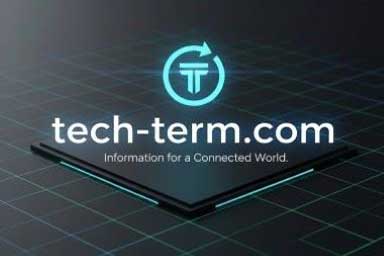ETC meaning
Last updated 1 month agoWhat is Ethereum Classic (ETC)? Definition, PoW vs. PoS, Future

What does ETC stand for?
Ethereum Classic is a decentralized Blockchain and Computing Platform. The undertaking is a Hard Fork – a break up Entity – of the Ethereum bLockchain.
It’s a clever settlement-powered commUnity that permits Developers to Build and install decentralized programs (dApps) on its Open-Source Software program. Hence, builders can create economic services, video games, Non-Fungible Tokens (NFTs), Metaverse, and others.
The Protocol turned into born following a decentralized self sustaining corporation (DAO) Hack in 2016, which saw $sixteen million stolen from the Ethereum blockchain.
To deal with the scenario, a few developers recommended rolling again the list of Transactions to get better the stolen funds as a Form of bailout for affected buyers. Although 70% of the funds were ultimately recovered, 30% had been left in limbo.
However, not all participants were on board with this concept. This led to the formation of the Ethereum Classic as a separate blockchain platform, creating a tough Fork of the Ethereum protocol.
According to the Ethereum Classic’s staunch supporters, the maxim “Code is law” must be upheld regardless of the State of affairs.
The “code is law” maxim posits that clever contracts are immuTable, and their Integrity have to be safeguarded to assemble an unstoppable decentralized surroundings.
What is ETC?
The Ethereum Classic platform is powered via its local Token, ETC, which was introduced shortly after the split from the more Moderen Ethereum protocol.
The Digital Asset holds sizeable cost because it serves a couple of purposes. These include:
- Payment for validating transactions in the Ethereum Classic platform.
- Covering the prices of securing block area on the Smart Contract Network.
Since ETC operates as a PoW asset, it lacks the inherent Capacity for investors to stake – a technique in which investors earn rewards for securing the commuNity.
In the absence of staking, traders can earn rewards on idle ETC via the Savings Characteristic supplied by means of most centralized crypto excHanges. This lets in buyers to earn a Variable interest throughout a said time Frame, whether a week or three months.
How Does Ethereum Classic Work?
Ethereum Classic combines the Great of Bitcoin’s Decentralization and security ethos with creative flexibility. The protocol is censorship-resistant and extraordinarily steady, allowing developers to build decentralized Packages on the bottom Layer using clever contracts.
So, how does Ethereum Classic’s machine perform?
Transactions on Ethereum Classic are particularly run the usage of the proof-of-work PoW consensus Algorithm.
Ethereum Classic operates in this manner:
- Sent transactions are first of all accrued in a reminiscence pool (Mempool), which serves as brief garage.
- Miners choose transactions they want to validate and compete to be the primary to solve the complex cryptographic puzzle.
- The first miner to try this Publicizes the answer to the whole community to tell other miners.
- Then, a revalidation test is accomplished by means of different miners to Make certain the transaction follows the set-down blockchain regulations.
- Once clarified, the primary miner gets the block praise (approximately 3.2 ETC), whilst the alternative miners get a commission from the transaction price.
- The transaction is then added to a block of other transactions and attached to the last block inside the community to form a series.
Ethereum Classic vs. Ethereum
While each Ethereum Classic and Ethereum offer comparable price, their operational setups vary.
The Ethereum Classic operates using the historic or first-technology evidence-of-work (PoW) consensus set of rules. This makes Ethereum Classic one of the few clever contract protocols allowing miners to earn community expenses and Block Rewards for validating transactions.
Meanwhile, Ethereum has considering the fact that transitioned to the evidence-of-stake (PoS) setup, in which validators need to lock up a large quantity of Ether Cryptocurrency to be eligible for transaction verification.
| Aspect | Ethereum Classic | Ethereum |
| Consensus Algorithm | Proof-of-work (PoW) – first-technology | Proof-of-stake (PoS) |
| Mining Rewards | Miners earn network costs and block rewards | Validators lock up ether (ETH) for verification |
| Energy Efficiency | Less electricity-efficient and strength-in depth | More energy-green |
| Speed | Slower as compared to newer networks | Faster Transaction Processing |
| Immutability | Strong emphasis on immutability | Allows alteration of blockchain transactions |
| Token Supply | ETC has a fixed supply of 210 million tokens | ETH has an infinite supply (with 4.5% annual increase) |
| Year | Event(s) | |
| 30 July 2015 | Ethereum launches after Vitalik Buterin and the Ethereum Foundation created the first-ever blockchain-based Turing-complete clever settlement platform with the Frontier release. | |
| 8 September 2015 | Frontier Thawing Upgrade launches, introducing the “Ice Age” that heralds the Ethereum “Difficulty Bomb” – a mechanism intended to move Ethereum from PoW to PoS. | |
| 16 March 2016 | Homestead Upgrade – a second model of the Ethereum blockchain – is launched. | |
| 5 April 2016 | Slock.It – a blockchain infrastructure issuer – creates the primary DAO smart contract audit. | |
| 30 April 2016 | DAO crowdsale starts offevolved with contributors of the public allowed to ship in budget in return for DAO tokens. | |
| 27 May 2016 | DAO crowdsale is concluded. | |
| 17 June 2016 | The DAO is hacked. | |
| 20 July 2016 | Ethereum Classic blockchain is eventually launched after a great deal debate among the builders. The undertaking token is renamed ETC in acknowledgment of the retention of the DAO hack event. |

